
688 Attack Sub is a submarine simulator video game designed by John W. Ratcliff and Paul Grace and published in 1989 for MS-DOS and in 1990 for Amiga by Electronic Arts. A Sega Genesis version developed by MicroProse was released in 1991 by Sega.
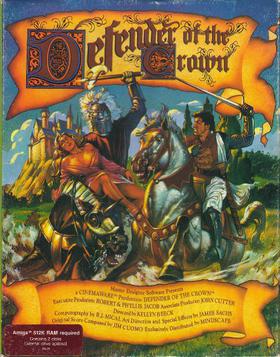
Defender of the Crown is a strategy computer game designed by Kellyn Beck. It was Cinemaware's first game, and was originally released for the Commodore Amiga in 1986, setting a new standard for graphic quality in home computer games.

Steel Panthers is a series of computer wargames, developed and published by several different companies, with various games simulating war battles from 1930 to 2025. The first Steel Panthers game was released in 1995, and the most recent update was released in 2018 and is still updated regularly (yearly).

Chuck Yeager's Air Combat is a 1991 combat flight simulation video game by Electronic Arts. Chuck Yeager was a technical consultant in the game and his digitized voice is featured in the game, giving encouragement and praise before and after missions. The game is characterized for its balance of an action laden gameplay which focuses on classical dog fights and a simple yet realistic flight model.

Gary Grigsby is a designer and programmer of computer wargames. In 1997, he was described as "one of the founding fathers of strategy war games for the PC." Computer Games Magazine later dubbed him "as much of an institution in his niche of computer gaming as Sid Meier, Will Wright, or John Carmack are in theirs."

Carrier Command is a 1988 video game published by Rainbird for the Amiga, Atari ST, IBM PC compatibles, ZX Spectrum, Macintosh, Commodore 64, and Amstrad CPC. Carrier Command is a cross between a vehicle simulation game and a real-time strategy game where players control a robotic aircraft carrier.
Turn-based tactics (TBT), or tactical turn-based (TTB), is a computer and video game genre of strategy video games that through stop-action simulates the considerations and circumstances of operational warfare and military tactics in generally small-scale confrontations as opposed to more strategic considerations of turn-based strategy (TBS) games.

GATO is a real-time submarine simulator first published in 1984 by Spectrum HoloByte for DOS. It simulates combat operations aboard the Gato-class submarine USS Growler (SS-215) in the Pacific Theater of World War II. GATO was later ported to the Apple IIe, Atari ST, and Macintosh. In 1987, Atari Corporation published a version on cartridge for the Atari 8-bit family, to coincide with the launch of the Atari XEGS.

Wolfpack is a World War II submarine simulator published by Broderbund in the 1990s, for Amiga, Atari ST, DOS, and Macintosh. It simulates combat actions between wolf packs of German U-boats and convoys of Allied destroyers and merchant vessels in the Battle of the Atlantic.

Empire: Wargame of the Century is a video game based on Empire developed by Walter Bright and published by Interstel Corporation in 1987.
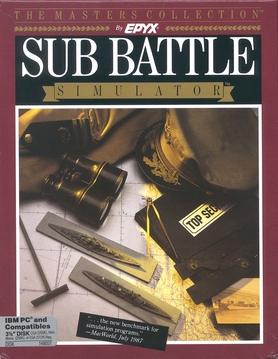
Sub Battle Simulator is a naval combat simulation game released by Epyx in 1987. The game was developed by Digital Illusions, Inc. It was released for the Amiga, Apple IIGS, Commodore 64, Atari ST, Macintosh, MS-DOS, and the Tandy Color Computer 3.

The Ancient Art of War at Sea is a computer game developed by Broderbund and released for Macintosh and DOS in 1987 as a sequel to The Ancient Art of War.

Halls of Montezuma: A Battle History of the U.S. Marine Corps is a video game developed by Strategic Studies Group in 1987 for the Apple II. Ports were later released for the Commodore 64, Amiga, DOS, and Apple IIGS. Halls of Montezuma is a war simulation game that offers all of the major battles involving the U.S. Marine Corps.
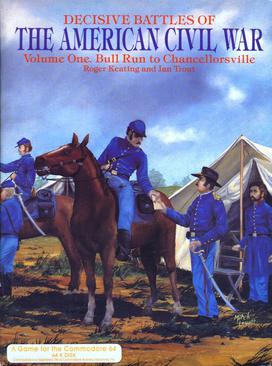
Decisive Battles of the American Civil War Volume 1: Bull Run to Chancellorsville is a computer wargame developed by Roger Keating and Ian Trout and published by Strategic Studies Group in 1988 for the Commodore 64 and Apple II. Two sequels were released in 1988: Volume 2: Gaines Mill to Chattanooga and Volume 3: Wilderness to Nashville.
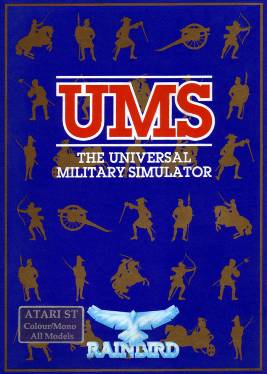
The Universal Military Simulator is a computer game developed by Rainbird Software in 1987 for the Macintosh, Tandy 4000, and IBM PC compatibles. In 1988, both Atari ST, Amiga versions were released. The game was created by Ezra Sidran. The PC and Amiga versions were ported by Ed Isenberg. The game spawned two sequels: UMS II: Nations at War and The War College: Universal Military Simulator 3.

PT-109 is a naval simulation video game developed by Digital Illusions and Spectrum HoloByte in 1987 for the Macintosh and MS-DOS. This game is roughly based on the events involving the Motor Torpedo Boat PT-109.

Harpoon is a computer wargame published by Three-Sixty Pacific in 1989 for DOS. This was the first game in the Harpoon series. It was ported to the Amiga and Macintosh.
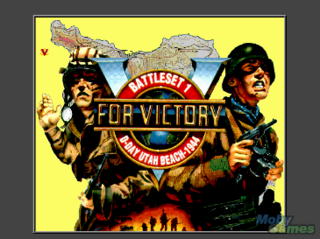
V for Victory: D-Day Utah Beach is a 1991 computer wargame developed by Atomic Games and published by Three-Sixty Pacific. It was widely lauded and repeatedly reviewed as the best wargame of its era. Its success led to three further games in the V for Victory series, and then the similar World at War series published by Avalon Hill.

The Hunt for Red October is a video game based on the 1984 book The Hunt for Red October by Tom Clancy. It was released in 1987 and was available for the Atari ST, Amiga, Apple II, Macintosh, ZX Spectrum, MSX, Commodore 64 and IBM PC. A port for the Apple IIGS was released in 1989. The player must navigate the Red October towards U.S. waters while avoiding the Soviet Navy. The game is a combination of submarine simulator and strategy game.

Panther Games Pty Ltd is an Australian games developer, best known for the WWII Airborne Assault and Command Ops PC video game series. Panther Games specialises in developing operational level wargames for the PC Wargame market.




















